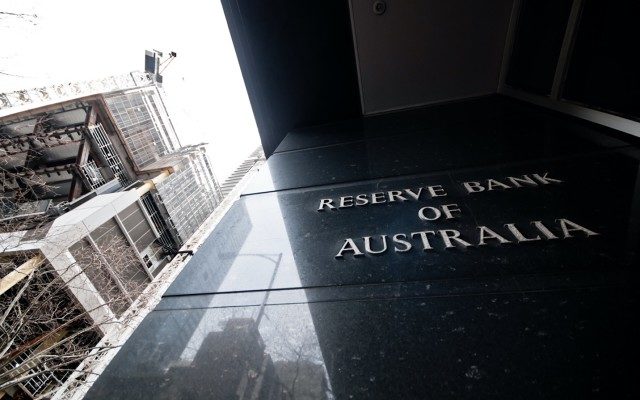|
This week we make a perhaps controversial call that goes against the grain of what every leading economist, including the RBA governor, has consistently said. That is, the cash rate will go to 0% before the end of the calendar year (which I previously alluded to in my article last week, though I did say 0.1%) and negative in the first half of next year assuming the current economic trajectory holds. How is this going to affect us in Australia? Bear with us, we’ll get there.  Author: Sid Ruttala Author: Sid Ruttala Going back to the GFC, the RBA had a lot more breathing space in terms of monetary stimulus, including a reduction in the cash rate to 3%. This is something that seems immensely high now but it was in fact a reduction of more than 400bps from the September of 2008 to September 2009 (i.e. 7% down to 3%). What has been evident ever since is a reluctance and, in my view, a total inability to normalise policy. Conventional wisdom suggests that this is due to a lack of inflation and economic uncertainty, but I would suggest that the more important driver is the stability of the financial system (think banks and housing), excessive debt and an unwillingness to let asset prices take their due course, that is to say an aversion to correction. Before I elaborate further though, for those of you unaware of how the cash rate actually works in practice, a brief detour to Economics 101 can be found in the box below.
QE & Negative Rates: A perverse but irreversible next step Now this is where we remember that the cash rate is a target maintained via open market transactions through the buying up of securities. Typically shorter duration to give liquidity into the financial system. QE is no different except for the fact that it goes up the duration/risk curve. This effectively creates a scenario of increased liquidity as you keep trying to ensure credit growth through to the real economy (credit is the growth in debt, by the way, and not overall debt in itself). This was the reason the RBA decided to create TFF (term-funding facilities) for small businesses during the Covid-crisis in Australia, effectively backstopping and guaranteeing a lower cost of capital for ADI’s (Authorised Deposit-Taking Institutions). It is why the Australian Office of Financial Management (AOFM) effectively guaranteed loans to SME’s. It is why the RBA decided to purchase Australian Government issued treasuries directly on market. As more liquidity comes into the system via ES funds (due to on market purchase) there is also downward pressure on the cash rate even if the official target hasn’t changed (demand-supply). If this increase in liquidity still doesn’t work then the next logical step is one of two alternatives (or both). The first is yield curve control, or the buying up of securities further up the yield curve and bonds, and on it goes, with the intention of building ES funds. Globally, we have seen this in the expansion of the Fed’s balance sheet to $7tn USD and, despite it arguably being illegal (in the absence of an act of Congress),their buying up of corporate debt. In Japan, this has included putting equities risk on the balance sheet of the Bank of Japan (the central bank buying shares what a novel idea). Has it worked? It is hard to definitively say unless we can show ‘what if” scenarios, which would undoubtedly be open for debate anyway. Unfortunately (or fortunately?) for us investors, what has been evident is that this whole scenario has seen the excess liquidity not driven into the real economy (why CPI has arguably been dead since the GFC despite the availability of so called ‘cheap money’) but through asset price inflation. That is, the reduction in the supply of supposedly ‘risk-free’ assets and the opportunity cost of short-duration leads to allocations higher up the risk curve. Money has been devalued, just not necessarily against what we like to measure it (CPI). The markets might be irrational in the short-run but never over the long-run. To reduce the word count and to avoid any more headaches amongst the readership, I won’t go into the lunacy of using CPI (created for a post-WWII industrial world) 75 years on. The other alternative is to go in the European direction (the Japanese chose to do both), toward negative interest rates. Remember that markets work not just based on nominal cost but also opportunity cost which can not only come from interest rate differentials but also inflation. Negative interest rates are a way of saying, in the absence of inflation (and if we can't get it), just do what it (inflation) effectively does by eating away purchasing power and thus get the velocity of transactions on track. The efficacy of such a strategy is still contested and this author does not wish to get into that particular debate (that might get political rather quickly despite monetary policy supposedly not being so. What has already been indicated closer home? What has already happened is the buying up of newly issued Australian treasuries, ending up on the balance sheet of the RBA. Despite Lowe ruling it out as a credible alternative in the initial stages of the crisis, the RBA intervened directly to keep the effective yield on Australian government debt as close to the cash rate as possible or within a band around it. More recently, Assistant Governor Kent has indicated that the RBA might move further out in the yield curve to supplement the existing three-year yield target. This is something that we see as required given the amount of government issuance likely to take place in the coming years. As a matter of fact, the current cash rate is already trading at 0.14% (due to the amount of open market transactions that are already being undertaken). As such, I wish to make the call that I’m even more bearish on the downside to 0% by year-end. A normative thesis around potential negative (Cash Rate)?
The negative rate call is a controversial one but in my view it is a necessity if one were to navigate a way out of the current situation. What has been missing since the GFC was an inertia on the part of governments to do the heavy lifting. While we had expansionary monetary policy, fiscal policy was going in the opposite direction due to political inertia in most cases. Even at the best of times monetary policy is a blunt instrument. Think about how the ES and open market transactions work, they are naturally adept at raising the interest rate and behaving countercyclically on the upside, thus effective in counteracting inflation. Monetary is not created for the purpose of creating economic policy or stimulating growth (they simply don’t have the toolbox nor the aptitude for it). Though the RBA has lofty aspirations across both (not to mention inflation, employment and currency stability). Unless you want technocrats taking the lead on industrial relations, you will be trying to fit a square peg into a round hole. Now that fiscal policy has joined the fray, negative interest rates can effectively keep the cost of serviceability on newly issued debt down to a level that won’t put excessive burden on the taxpayer in the short-run (and thus be contractionary). Again, for the economists amongst you, I refuse to accept the nonsensical ramblings of the RBC (Real Business Cycle) prophets or the far-fetched notions of Ricardian Equivalence that have guided our policy making for the past three decades, including the ever so famous Reaganomics. There will be pain, especially for lenders, but the piper has to be paid. The QE policies and general monetary policies created a 30-year bull run in bond markets. Negative might see them have a final hurrah up but reversion to the mean has always been the principle upon which the capitalist market has relied. Especially so should inflation come back into the equation in this scenario. The hint is in the name, correction. Another controversial call, but the disclaimer by most central bankers around the world is that they will let inflation shoot above target at least for a short period of time, should tell us how they feel about the unravelling of the gigantic balance sheets any time soon or raising rates. For us at TAMIM and me personally, equities and steady (or as steady) as she goes. At the very least, we know that central bankers are also human and typically in a demographic that ensures at least a modicum of collective guilt about pushing the pension system into risk assets. The only way out is to de-risk those assets as much as possible and allow the music to continue playing for as long as possible.
2 Comments
Jason
22/10/2020 09:55:23 pm
Party till inflation and the 10-year bond rates start to rise, then sprint for the small exit door...
Reply
Percy Allan
23/10/2020 10:51:49 am
Spot on!
Reply
Your comment will be posted after it is approved.
Leave a Reply. |
Markets & CommentaryAt TAMIM we are committed to educating investors on how best to manage their retirement futures. Sign up to receive our weekly newsletter:
TAMIM Asset Management provides general information to help you understand our investment approach. Any financial information we provide is not advice, has not considered your personal circumstances and may not be suitable for you.
Archives
April 2024
Categories
All
|
TAMIM | Equities | Property | Credit
DISCLAIMER
The information provided on this website should not be considered financial or investment advice and is general information intended only for wholesale clients ( as defined in the Corporations Act). If you are not a wholesale client, you should exit the website. The content has been prepared without taking into account your personal objectives, financial situations or needs. You should seek personal financial advice before making any financial or investment decisions. Where the website refers to a particular financial product, you should obtain a copy of the relevant product services guide or offer document for wholesale investors before making any decision in relation to the product. Investment returns are not guaranteed as all investments carry some risk. The value of an investment may rise or fall with the changes in the market. Past performance is no guarantee of future performance. This statement relates to any claims made regarding past performance of any Tamim (or associated companies) products. Tamim does not guarantee the accuracy of any information in this website, including information provided by third parties. Information can change without notice and Tamim will endeavour to update this website as soon as practicable after changes. Tamim Funds Management Pty Limited and CTSP Funds Management Pty Ltd trading as Tamim Asset Management and its related entities do not accept responsibility for any inaccuracy or any actions taken in reliance upon this advice. All information provided on this website is correct at the time of writing and is subject to change due to changes in legislation. Please contact Tamim if you wish to confirm the currency of any information on the website.
magellen, kosec, clime, wilson, wam, montgomery, platinum, commsec, caledonia, pengana, tamim


 RSS Feed
RSS Feed